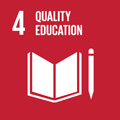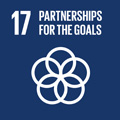- Docente: Giovanni Emanuele Corazza
- Credits: 6
- SSD: ING-INF/03
- Language: English
- Teaching Mode: Traditional lectures
- Campus: Bologna
- Corso: Second cycle degree programme (LM) in Telecommunications Engineering (cod. 9205)
Learning outcomes
At the end of this course, the student will have knowledge of the essential constructs underpinning Communication Theory and its application in telecommunications systems. In particular, the student will master the fundamentals of Information Theory, Decision Theory, and Estimation Theory, as well as their practical application to Channel Coding for error protection.
Course contents
The course contents are divided in 12 Chapters:
1) Introduction to Information Theory
2) Capacity and channel coding theorem
3) Information Theory for continuous random variables
4) Block coding
5) Convolutional coding
6) Digital modulation techniques
7) Decision theory
8) Estimation theory
9) Estimation of auxiliary parameters
10) Detection in digital receivers
11) Detection in the presence of memory: decoding
12) Network Information Theory
Readings/Bibliography
Mandatory:
- Course handouts
Optional:
- T.M. Cover, J.A.Thomas, Elements of Information Theory, New York, Wiley, 1991.
- Van Trees, Harry L. Detection, estimation, and modulation theory, part I: detection, estimation, and linear modulation theory. John Wiley & Sons, 2004.
Teaching methods
The course is offered in a blended modality, with the possibility for the students to follow online or in presence. In case the requests for in presence attendance exceed the class capacity, shifts may be organised. The course includes frontal lectures and practical examples. Attending all classes and taking personal notes is highly recommended. Group work can be exploited as needed on specific application examples.
Assessment methods
The final exam is in the form of an online questionnaire, with questions covering all of the 12 Chapters of the course. Question formats include (but are not limited to): open (essay), multiple choice, true/false, text drag-and-drop.
The student is expected to show familiarity with all of the fundamental concepts of communications theory, with an ability to quickly recognise subjects and provide appropriate answers.
Teaching tools
IOL Platform, EoL Platform, MS TEAMS, Zoom, PollEverywhere
Office hours
See the website of Giovanni Emanuele Corazza
SDGs




This teaching activity contributes to the achievement of the Sustainable Development Goals of the UN 2030 Agenda.
